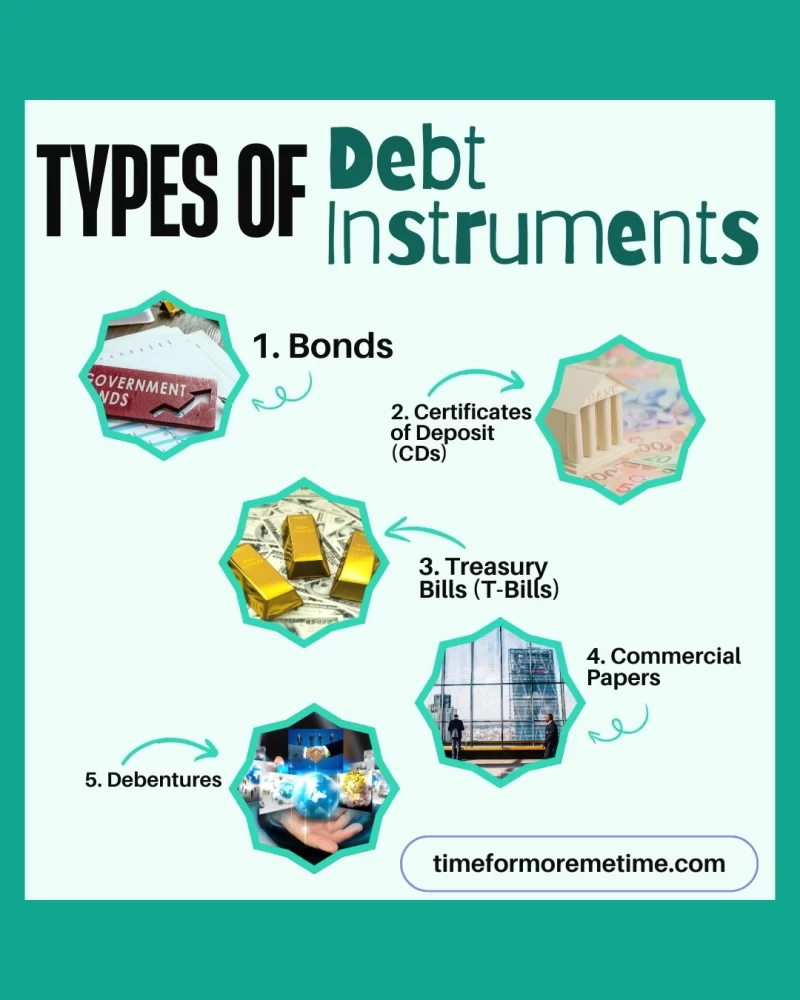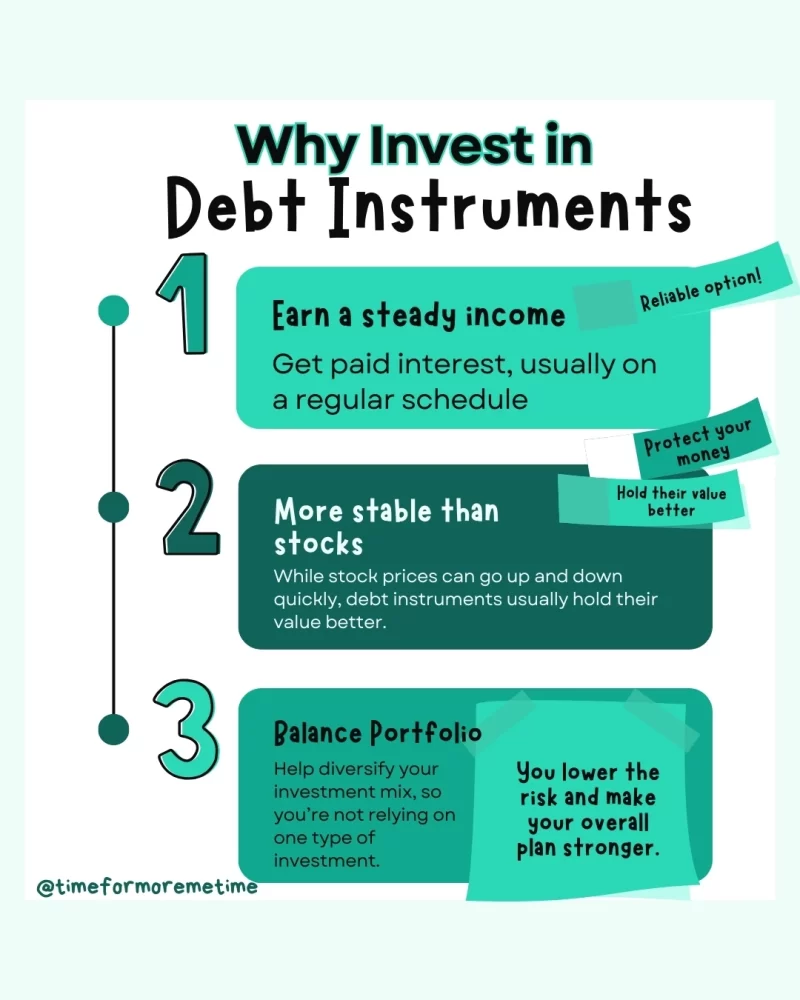You may not often come across the term “debt instruments,” but it’s important to understand if you’re looking to start investing. This short post will explain what debt instruments are and make sure you understand the main points once you finish reading. Let’s get started!
What Are Debt Instruments

Debt instruments are financial tools, assets, or instruments that allow you to lend your money in exchange for interest payments. They are essentially legally binding contracts between two parties: you, the lender, and the borrower, which can be a company, bank, or government.
Companies often issue bonds to raise funds for growth and expansion, while governments issue debt instruments to finance various projects and services, supplementing tax revenue.
As an investor, when you buy bonds or other debt instruments, you are lending your money to the issuer at its purchase price. In return, the issuer pays you interest and repays the principal amount—the amount you lent—on a specified date known as the maturity date.
There are several types of debt instruments you can invest in, including:
- Bonds: The most common type of debt instrument, bonds can be bought and sold in the market. They are typically secured loans backed by the issuer’s assets. If the issuer encounters financial trouble, their assets can be sold to pay bondholders.
- Certificates of Deposit (CDs):
Offered by banks, CDs are low-risk investments where you agree to keep your money deposited—treating it as a loan—for a fixed term (e.g., 6 months or 1 year). In return, the bank pays you a guaranteed interest rate. Withdrawing your money before the term ends may result in a penalty. - Treasury Bills (T-Bills):
These are short-term debt instruments issued by the government, usually maturing within a year. You buy them at a discount and receive the full face value at maturity, with the difference being your interest. T-Bills are considered very safe since they are backed by the government. - Commercial Papers:
These are short-term loans issued by companies to cover immediate operational costs. They typically have a quick repayment period and often offer higher interest rates due to their short-term nature. - Debentures: Essentially, debentures are unsecured bonds. This means there is no guarantee that you will get your money back if the issuer encounters financial trouble. In the event of bankruptcy, debenture holders are paid after secured creditors but before shareholders.
Each type of debt instrument serves different purposes based on your investment goals, risk tolerance, and time horizon. Whether you are looking for safety, steady income, or a short-term investment option, there is likely a debt instrument that fits your needs.
Where You Can Invest In Debt Instruments
There are several easy ways to invest in debt instruments, depending on your investment goals and how involved you want to be:
- Banks: Invest through banks offering low-risk products like Certificates of Deposit (CDs) and savings bonds, which provide fixed interest and predictable returns.
Brokerage Accounts: For more variety and control, open a brokerage account for access to a wider variety of debt instruments, available through both traditional and online brokerages.
Mutual Funds and ETFs: For a hands-off approach, consider mutual funds and ETFs focused on fixed-income investments. These funds pool money from multiple investors to buy a mix of debt instruments and can be accessed via brokerages, financial apps, or advisors.
Retirement Accounts: Utilize accounts like 401(k)s and IRAs, which often include bond funds, offering tax advantages and helping to build a stable income stream.
Digital Platforms and Robo-Advisors: Use digital platforms and robo-advisors, like Acorns, for easy investment in bonds and bond-related funds with automated services.
Whether you’re looking for stability, steady income, or a short-term place to park your money, these options make it simple to get started with investing in debt instruments.
Why You Should Invest In Debt Instruments

Debt instruments are an excellent way to earn a steady income because they provide fixed interest payments, allowing you to generate passive income. If you choose secured loans or debt instruments, you have a high chance of earning and getting your money back from the issuers or borrowers.
In addition to earning interest, you can also profit by actively trading many debt instruments. The prices and interest rates of some debt instruments can fluctuate, and selling or trading those with higher yields can lead to capital gains.
However, it’s important to note that these price and interest rate changes occur less frequently with debt instruments compared to equity instruments, which represent ownership in a company and may pay dividends based on profits. For example, stocks can experience significant price fluctuations, while debt instruments typically maintain their value better.
When Is The Best Time To Invest In Debt Instruments
The best time to invest in debt instruments is as soon as possible. Income from these instruments is typically guaranteed, helping your money grow over time. The earlier you invest, the more you can earn, and you can use those earnings to fund other investment opportunities.
However, the amount you earn will depend on the specific debt instruments you choose and how effectively you trade and manage them.
Conclusion
Investing in debt instruments is a reliable way to generate passive income and grow your money. By making smart investment choices, you can make your money work for you and build the capital needed to explore more advanced, albeit riskier, investment opportunities.
If you found this information helpful, consider subscribing to our blog for more insights, following us on social media for updates, and visiting our YouTube channel for informative videos.
Sources
- Photo: Unsplash: Viacheslav Bublyk






